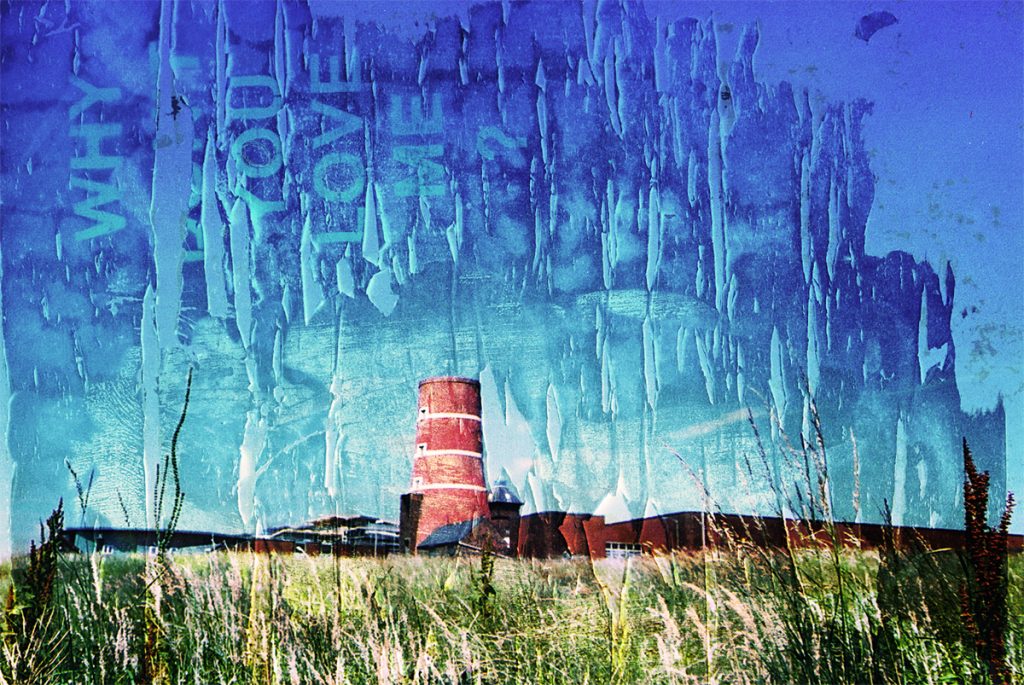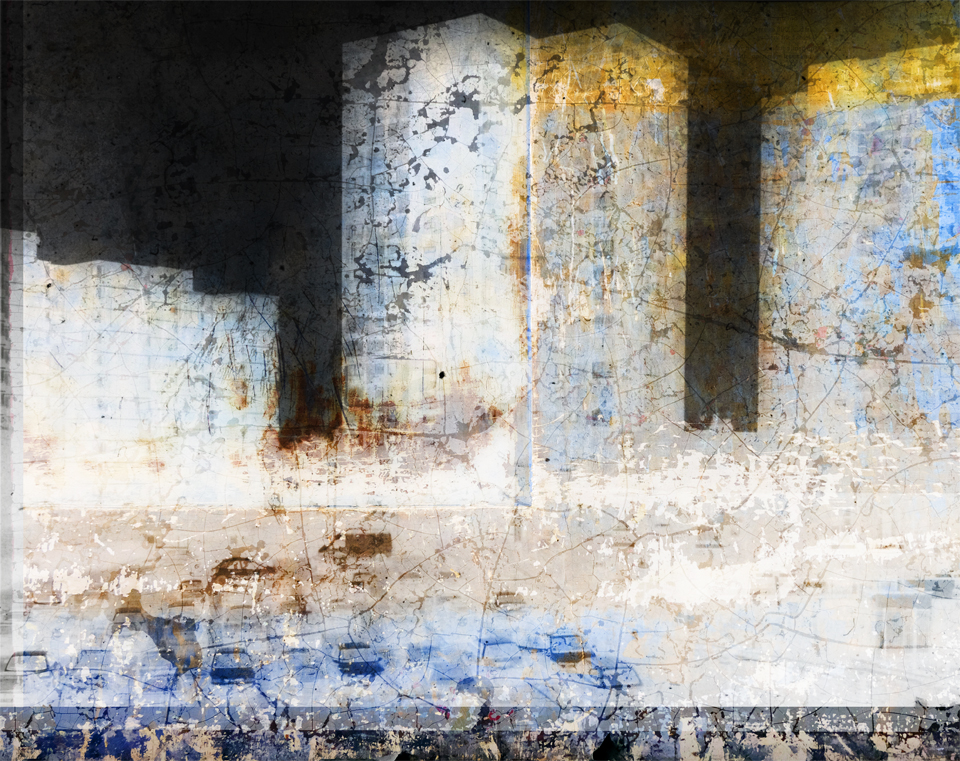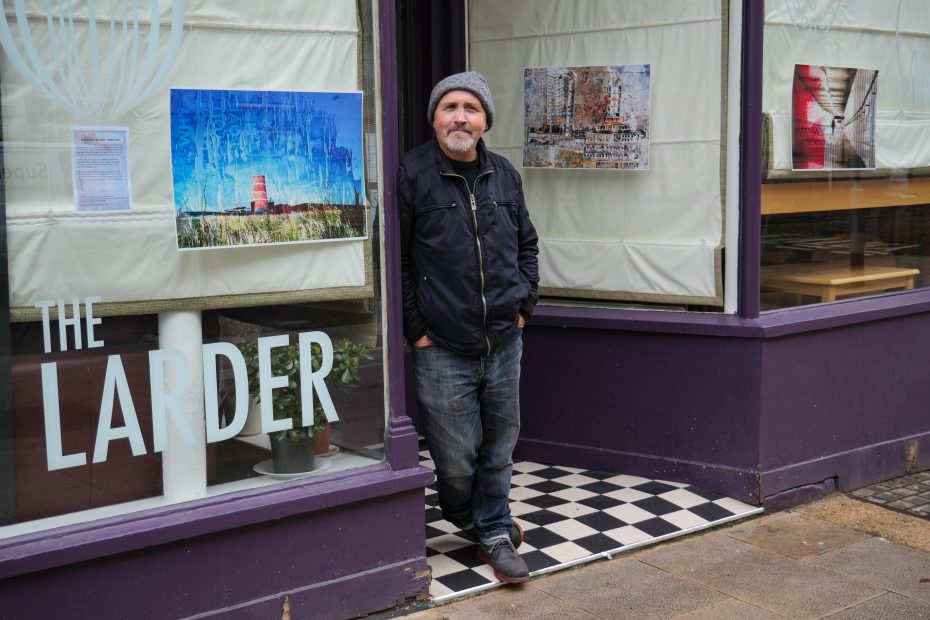A new exhibition of artwork with Preston as it’s focus has gone on display in the windows of The Larder Café, Preston. ‘Marginal Images’ is the culmination of over two decades of work by John Robertson, a local photographer. Fascinated by the evolving city, he began documenting rapidly disappearing businesses such as The Real McCoy burger bar and spaces, like the Preston Bus Station underpass, and combined these images with old film negatives, torn posters and found objects. I wanted to find out more about his work and inspiration.
Tell me a little about your background in photography.
At school we used to read the NME and Sounds music papers – it was photographers like Anton Corbijn and Pennie Smith that ignited something, that and the artwork of my post-punky vinyl collection. I borrowed an instamatic 110 film camera in the 1980’s off my mum and exposed and ruined my first film on holiday in Scotland. I started writing and got involved with Preston’s Black Horse Poets. At the time I was unaware that some observations I wrote were closely related to photography especially when I wrote haiku. I started to feel connections between the two. Photography was always lingering but a massive head change came when I started a BTEC and got in a darkroom. Then I did a HND qualification and a degree. I was halfway through an MA when I decided academia was no longer for me.
Where do you draw inspiration from for your abstract artwork?
Other photographers and artists and understanding their processes other than my own. I’ve felt inspiration from all sorts – short stories, haiku, post-punk artwork, torn flyers, book and vinyl sleeve design, rust, nature, music…anything that involves layering, whether that’s merging things physically or if it’s stories within stories. Maholy Nagy and Kurt Schwitters were very inspirational and of course loads of photographers.
What inspired you about the local landscape?
I thought a post-industrial town with ancient roots crossed with becoming a city a real fascination, it opened up a lot of challenges regarding its changing spaces. Documenting change became a fixation, intuitive almost, like knowing when something might vanish. As I don’t drive, psychogeography seemed to take charge. Post-industrial wastelands are scattered about the North West and I thought those spaces and buildings had their own stories and textures. The older and forgotten locale was disappearing and becoming unknown. I wanted to be prolific because there’s a reputation here for interesting stuff getting bulldozed.
What process do you undertake when creating each image?
I’ve used different media for this project, I’ve included black & white medium format film, old 6×4” scanned prints, 35mm negs and digital files. For one image which isn’t part of this collection, I used a crumpled wrapping paper with stars in the design and an ink-smeared till roll from when I worked in a supermarket. I’ve scanned them in, layered the images in photoshop and experimented that way. I’ve found that the thing you’re working on starts to inform you intuitively, like you know what works and when to discard stuff. Sometimes I’ve selected an image and pulled it at the last minute…it’s happened with the Larder Café.

Tell me the story behind two of your favourite images.
My favourite is definitely ‘Preston Windmill’. I love the openness around the building. You can’t get that photograph again. Moor Lane flats came down and after clearing it the area became like a welcome meadow with a question mark. It’s a bit strange and eerie but it’s got this vibrant blue sky. The textured scanned image is a disintegrating poster that says “Why don’t you love me?” This features in another image as well.

Avenham has been my locale for years, I love it. ‘Avenham Flats’ is an inverted image from film. I like it when something as banal as a car park with flats can look interesting when played with. This was layered with the colours of a boat exterior and also the cracked texture of weathered plastic… My wife Alizon has said, “What’re you doing taking pictures of the inside of a skip?”
These two are like a backdrop to this set because of different materials used and they remind me of a process and experimenting.
What do you love about photography?
With film it was the darkroom and whole process of the unknown, whether that photo would come out right or not, then fixing an image. I’ve hit loads of brick walls with photography and suddenly one idea leads into others and it’s back to creative thinking. I love ideas mostly but it’s also a way of seeing and living differently. Photographers have taught us so much about how we see and how we respond. It’s immediate and debateable. One image can horrify people and at the same time help bring war to a close. It can be powerful.
What can we expect when we go to see your exhibition at The Larder?
I hope that people will feel intrigued about their locale. This is a Preston-centric set of work. It’s more personal because it isn’t just about the aesthetics it’s about the layers and memories, stories and texture. It focusses on things still with us and things long gone which gave people a sense of place – ‘Real McCoy (burger bar)’ is a good example. When I posted a photo of that on Facebook, loads of comments came up – “Best burgers in town, great place after the Warehouse!” I hope the exhibition creates similar connections, however fuzzy.
Marginal Images – Preston runs at The Larder, Lancaster Road, Preston from Monday 7th September – Thursday 1st October 2020.
You can view more of John’s work on his website. www.marginalimages.com
Prints are available to buy from The Larder and John’s online shop .

Pingback: Photography exhibition celebrates Preston’s vanishing places and spaces | Blog Preston